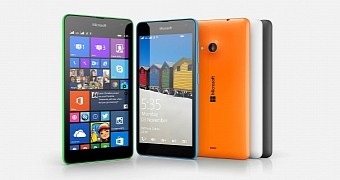It’s a well-known fact that Microsoft is betting big on affordable Windows Phone handsets, but it turns out that the company is working to bring even cheaper devices to the market with a new strategy.
While in the past Microsoft tried to encourage the making of cheap devices by cutting down Windows license prices, this time the company is seeking to drop the final price of its phones by signing new deals with suppliers across the world.
This information comes via Digitimes, which claims that Microsoft is “aiming to obtain lower-cost solutions from supply chains in 2015.” This way, the company hopes that it would be able not only to bring cheaper devices to the market but also to drop the price of high-end models expected to debut in late 2015.
What is more interesting is that Microsoft is thus trying to reduce the final price of all its devices, so more phones running Windows 10 could drop below the $100 (€75) barrier if this plan goes through.
According to the same source, Taiwanese suppliers are already struggling to align their prices with those of Chinese makers. The best example seems to be BOE Technology, a China-based TFT-LCD manufacturer who has recently decided to cut the price of its panels by up to 20 percent.
New flagships expected this year
Microsoft already introduced two new models at MWC 2015, namely the Lumia 640 and Lumia 640 XL, but the company plans to bring out flagships in the second half of the year, most likely after Windows 10 gets the go-ahead.
Windows 10 is projected to see daylight in the fall of 2015 and that’s the same moment when Microsoft is expected to introduce the official successors to Lumia 930 and Lumia 1520, both of which continue to be the two high-end models in Redmond’s lineup.
Details are missing right now and some reports claim that both flagships are expected to receive upgrades even sooner, possibly in mid-2015, as Microsoft is working at full speed to bring new high-end devices to the market.

 14 DAY TRIAL //
14 DAY TRIAL //